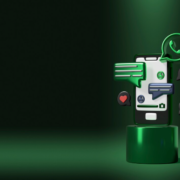There are a variety of injuries and complaint conditions that can affect in the loss of an eye. Frequently, prosthetic eyes are made of glass painted to look like a natural eyeball. Still, in the unborn prosthetic eye reserves will be made by 3D printers. Experimenters at Fraunhofer Technology have made improvements in 3D printing prosthetic eyes and have supplied their 3D published eye to the first case.
Moorfields Eye Sanitarium NHS Foundation Trust
Fraunhofer experimenters have developed several new technologies that ameliorate the current homemade product of individual prosthetic bias. The technology utilizes software called CuttlefishEye that can produce a 3D checkup of the eye socket along with a color-calibrated print of the healthy eye to produce a 3D replica The software also utilizes a 3D printing motorist to print the eye using a multicolor and multimaterial 3D printer. The result of the 3D printing technology and the checkup of the healthy eye is a prosthetic that looks more realistic. Another benefit of the 3D printing technology is that while it makes a more realistic prosthetic eye, it also requires only a bit of the time of creating them collectively by hand.
Lately, a prosthetic eye created using process was given to a case in a clinical trial conducted at Moorfields Eye Hospital London. Experimenters worked on their process for four times before the first eye was used to treat a case. Professor Mandeep Sagoo, a adviser ophthalmologist at Moorfields, says he and other experimenters in the design hope the coming clinical trial will give substantiation pressing the value of the technology. Sagoo also expects the technology to make a significant difference in the treatment for cases and to reduce waiting lists for prosthetic bias.
Moorfields Eye Sanitarium NHS Foundation Trust
Project experimenters say that colorful injuries and complaint conditions taking the junking of an eye impacts about three- diggings of a million people in Europe alone and over 8 million around the world. The new technology improves the creation of prosthetic eyes, which has used in the same essential manufacturing processes for decades One of the biggest challenges of common styles for producing this type of prosthetic is the invasive molding procedure that can be distressing enough in children that general anesthetic is needed. Once the molding process is over, current product styles use time- consuming handwrought work creating several months of staying before the eye is available. Exercising the new technology, the original appointment for a case entering the 3D published eye lasts seconds.
Anon-invasive,non-ionizing checkup exercising a modified Optical Coherence Tomography ophthalmic scanner is made that takes2.4 seconds. This scanner is n’t new and is routinely used in hospitals around the world. Once the checkup is complete, a color-calibrated print of the eye is produced and transferred to the Fraunhofer IGD. The CuttlefishEye software can snappily produce a 3D published model to shoot to the printer tackle.
The 3D prosthesis is also published by Fit AG, using its times of cumulative manufacturing experience. When the printing process is complete, the eye is audited and also polished by educated ocularists. With a single 3D printer, the periodic demand of around prosthetics annually for Europe could be fulfilled.
With anything implanted into the mortal body, rigorous quality control measures have to be followed. CuttlefishEye software is classified as a Class 1 medical device. Experimenters also performed expansive tests for biocompatibility with the 3D printing material. In the UK, the technology was given a letter of blessing for clinical trials by the UK Medicines and Healthcare products Regulatory Agency (MHRA).
About 40 cases will be signed for the clinical trial, each entering a 3D published optical prosthesis. Over the following 12 months, the actors will be examined by good clinicians and asked to report their gests with the new prosthetic. While a single 3D printer could fulfill the periodic need for all of Europe, experimenters believe that one scanning device per clinic and the deployment of a small number of geographically located 3D printers could meet the entire global demand for 8 million people in need of prosthetic eyes.
Significant exploration is being conducted around the world into coming- generation prosthetic bias. Important of that exploration is into advanced prosthetic branches. For illustration, new exploration published last summer delved using attractions to help control bionic branches. This time also saw experimenters produce technology to enable a sense of touch for bionic branches. A sense of touch is critical to allow the stoner to know how hard to grasp an object without damaging it or dropping it.
Last December, a man tormented with quadriplegia was suitable to feed himself for the first time using advanced robotic prosthetic bias and signals taken from his brain using six electrode arrays implanted directly into the brain. In testing, the case used the brain- machine interface and robotic arms to slice a Twinkie with a cutter and feed it to himself with a chopstick.















![How to solve [pii_email_af9655d452e4f8805ebf] Error?](https://themediahubs.com/wp-content/uploads/2023/02/U9rr3rhWhUvxCSyrdw3r5MZLGTsfOGbJeliDmntx-1-1-400x225.jpg)



![How to solve [pii_email_af9655d452e4f8805ebf] Error?](https://themediahubs.com/wp-content/uploads/2023/02/U9rr3rhWhUvxCSyrdw3r5MZLGTsfOGbJeliDmntx-1-1-180x180.jpg)
Comments